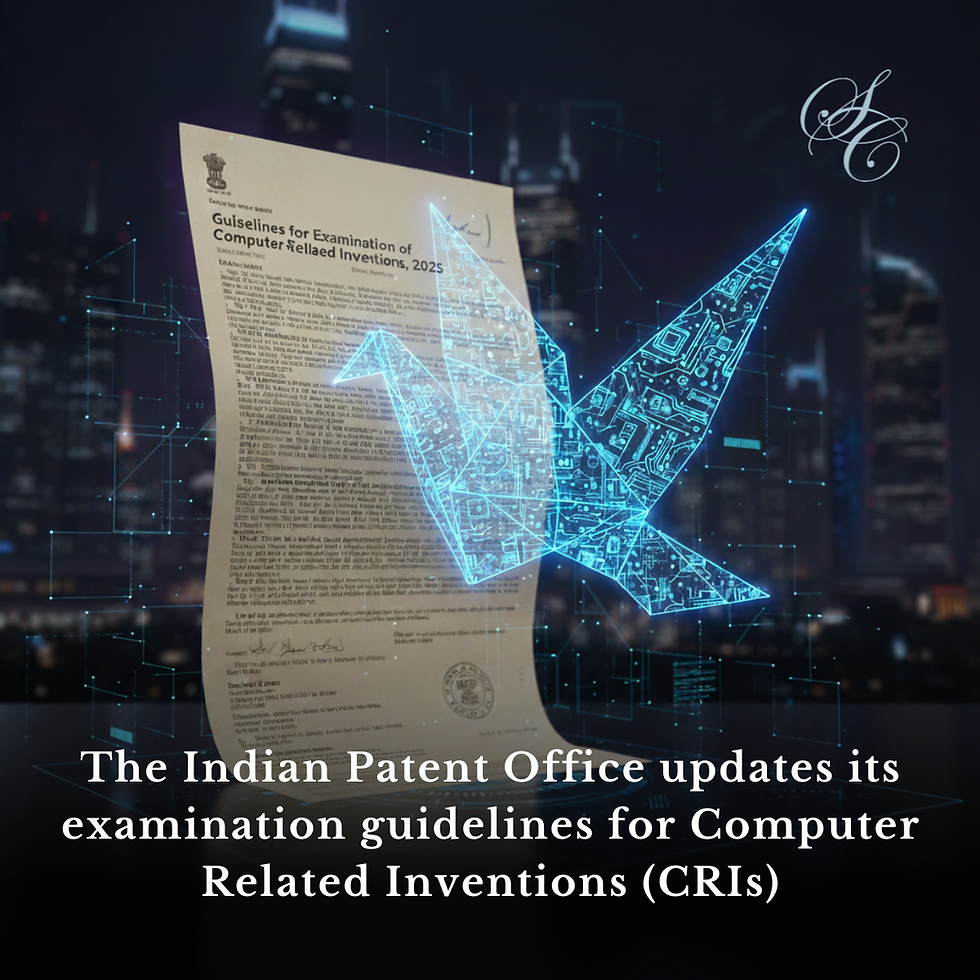Determination of Well-Known Trademarks: Dilemma Posed By Madras High Court’s Recent Judgment
- Sarwajeet Singh
- Dec 15, 2018
- 4 min read
For any brand owner, the accordance of well-known status to his brand is a “milestone.” The protection afforded to a well-known trade mark goes beyond traditional standards and focuses on protecting the distinctiveness of a trademark as against free riding and defilement.
In India, the factors which are to be considered while determining the well-known status of a trade mark, are, inter alia ,the duration, extent and geographical area of use, promotion or any registration or application for registration of the trade mark; and record of successful enforcement of the rights in the trade mark, in particular, the extent to which the trade mark has been recognized as a well-known trade mark by any court or Registrar under that record.
Further,India’s new trade marks rules have created a procedure to recognize well-known trade marks by allowing the proprietor of a trade mark to get the mark registered as well- known, without the mark being a subject of any contentious proceeding. Before the enactment of the new rules, marks were only declared as well-known during the proceedings of opposition or rectification or infringement.
The competent authority to declare a mark as “well-known”
In practice, courts have declared marks to be well-known. For instance, marks such as MARS, PLAYBOY, REVLON, NESTLE, MICROSOFT etc. have been declared as well-known trade marks by the Delhi High Court. These marks also feature in the list of well-known trade marks available on the Trade Marks Registry’s (“Registry”) website.
However,in a case, Texmo Industries vs 3 Mr. Roshan Kumar [C.S. No. 357/2017] before the Madras High Court, the issue was whether a High Court had the power to declare a trade mark as well-known.In this particular case, Texmo Industries, inter alia, prayed that its trade mark TEXMO be declared a well-known trade mark.After granting an initial interim injunction,the Madras High Court allowed Texmo Industries’ motion for summary judgment for various reliefs. In relation, however, to the relief to declare TEXMO as a well-known trade mark, the suit has been kept pending until a larger bench of the court first addresses the following question, namely, “whether the Court would be the appropriate authority for declaration of a mark as a well-known mark or is it only the Registrar who is empowered to declare so”.
In this case, the judge was of the opinion that the court cannot pass an order declaring a mark as a well-known trade mark. Rather only the Registrar of Trade Marks has the exclusive power to accord well-known status to marks.
According to the court, the text of the Trade Marks Act, 1999 (“the Act”), makes it clear that the Registrar is the proper authority to adjudicate the well-known status of a trade mark. The court further held that the Registrar is better suited to make investigations on this question and consider the various factors enumerated under Indian law.
It was the opinion of the court, that amongst the various factors enlisted in the Act which are to be considered while determining the well-known status of a trade mark, the court can only determine one factor, namely, the well-known nature of a mark within one relevant section of the public. For instance, in this case, the Plaintiff was manufacturing motor pumps used in the agricultural sector and if substantial number of persons in the agricultural field are aware of and opt for the Plaintiff’s TEXMO products, then certainly a determination can be made that the mark TEXMO is well-known to that particular section of the public. However, such determination may only be one amongst many factors which contributes to the well-known status of the trade mark. Thus, the issue whether the court can declare that the mark is a well-known trade mark is the issue which needs to be addressed.
Since there has been an earlier dissenting judgment by the Madras High Court on the very issue of the court’s power to declare a trade mark as well-known, the judge referred the question to a higher bench.
Why it is difficult to accept this interpretation?
Although the Registrar seems to be well-placed to evaluate the various factors listed in the Act and to determine the well-known status of a trade mark, in my opinion,the court of appropriate jurisdiction is also similarly placed in terms of legal expertise and the power to requisition of documents or evidence, required for such determination. As stated earlier, courts have declared several trademarks to be well-known in previous cases, and such marks also feature in the list of well-known marks available on the Registry’s website.
Further,a bare reading of the relevant rules and the relevant form that is required to be filled for determination of a mark as well-known, shows that the Registrar does not make or have the power to make any special investigation that is beyond the ability and scope of a court. It is pertinent to mention here, that prior to the express provision of applying for a mark to be declared as well-known, the most common mode of getting a mark recorded as well-known in the Registry records, was by alluding to a favorable court order and requesting the Registry to include the mark in the list of well-known marks available on its website.
Dilemma posed by the judgment
The foremost consideration raised by the Madras High Court’s interpretation of the Registrar being the sole authority to determine the well-known status of marks,is how such an exclusive jurisdiction of the Registrar would play out in cases where the plaintiff couches his cause of action within the law on well-known mark. If the Madras High Court’s interpretation is accepted, then the plaintiff might have to first approach the Registrar to get his trade mark recorded as well-known, before instituting any action on the basis of the well-known status of his mark.
Further, if such exclusive jurisdiction lies with the Registrar, another dilemma which is posed is the ability of a court to hear appeals to the Registrar’s decision in such matters.
Lastly, it is difficult to accept an interpretation which places the Registry and the decision of a Registrar over and above the legal competency and judgement of a court.
The larger bench constituted in the Madras High Court will hopefully address these questions and intricacies.




Comments